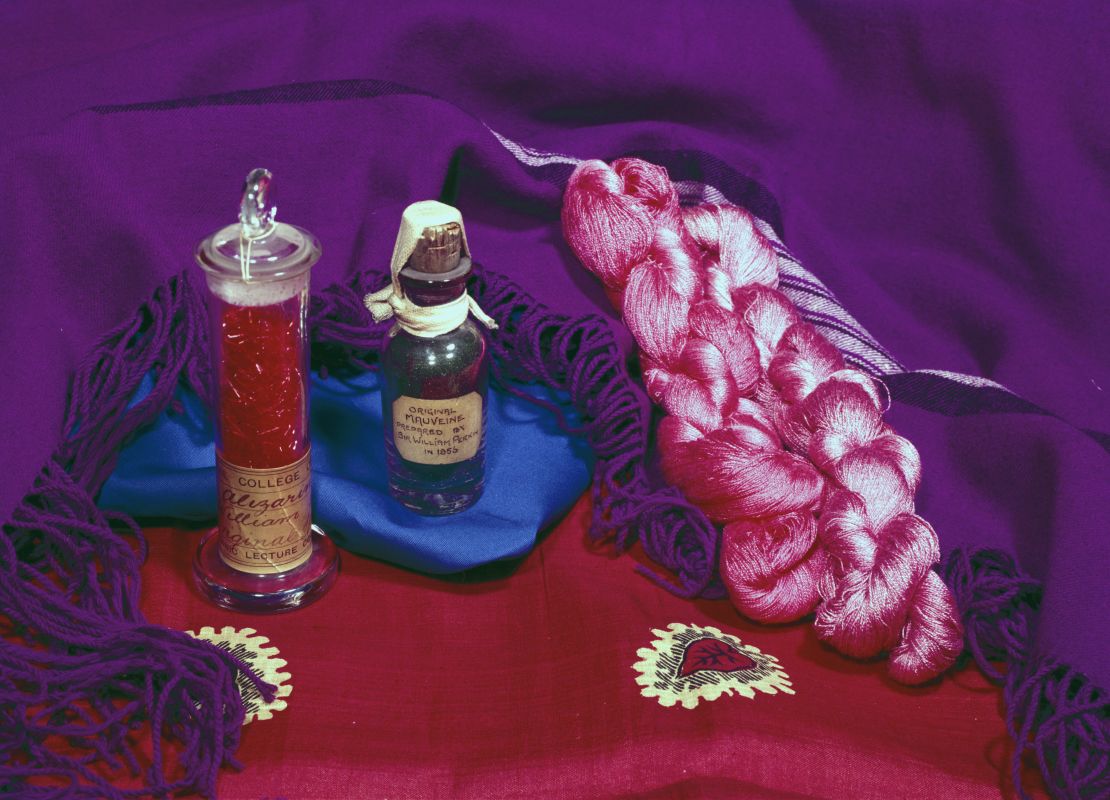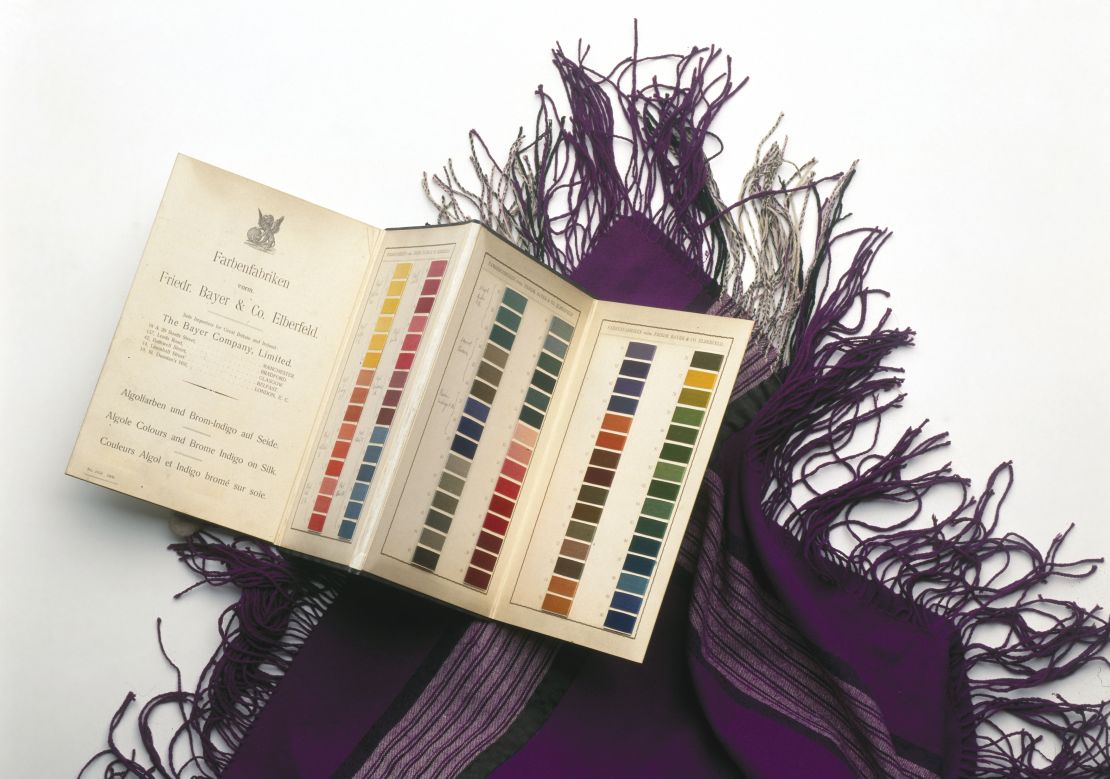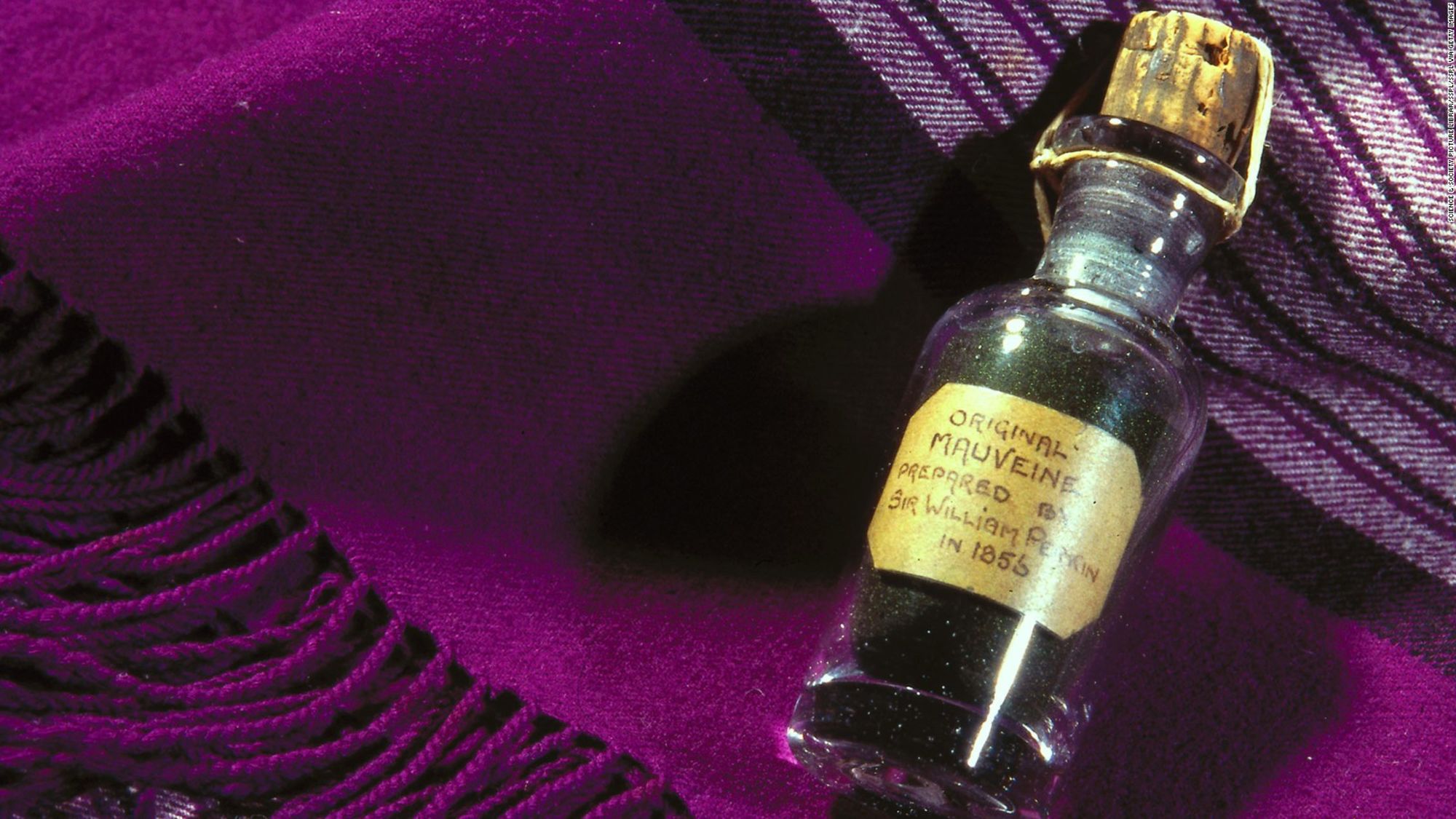Editor’s Note: Read more unknown and curious design origin stories here.
When he started fiddling with chemicals in his home in March 1856, William Henry Perkin had no idea what was about to happen.
He was an 18-year-old student at London’s Royal College of Chemistry, eager to impress his teacher. His homework assignment was to run experiments at home during the Easter break.
Perkin was tasked with finding a cheap way to produce quinine, a substance used to treat malaria, which had to be extracted from the bark of exotic trees and was thus expensive.
The young man thought he could make it himself in his simple home lab in London. So he started mixing ingredients.
A black goo
To make artificial quinine, Perkin turned to coal tar, the discarded sludge from Victorian gas lighting. It was believed that the two substances shared a similar chemical structure.
But once he finished his concoction, instead of the normally colorless quinine, all that was left in his test tube was a thick black goo.

When he tried to wash it off, it left behind a vivid purple color. Remarkably, he found that the color transferred to a cloth with untarnished brilliance.
William Henry Perkin had failed to synthesize quinine, but had accidentally invented the first synthetic dye, in one of the most astonishing examples of serendipity in science.
Right color, right time
Purple just happened to be the most coveted color of the time. “Various shades of purple, pink, lilac, mauve, and rose were at the height of fashion in the spring of 1856,” Regina Lee Blaszczyk, professor of business history at the University of Leeds and author of “The Color Revolution,” said in an email.
Perkin realized that he was onto something. Until then, there were only natural dyes derived from plants and animals.
Perkin's mauve
The choice was limited, the colors were dull and the prices were high. In some instances, the extraction process was painstaking and laborious, particularly for purple. “It had to be extracted from a type of shellfish that grew in select places in the Mediterranean,” Lee Blaszczyk said. “The process was costly, messy, and a general pain.”
Finally, as the world entered the post-Industrial Revolution phase, the manufacturing processes required to exploit the discovery were all in place and ready to go.
This perfect storm was not lost on observers, as Simon Garfield notes in his book “Mauve.” “At one of the many jubilee celebrations of Perkin’s discovery,” he wrote, “the chemist CJT Cronshaw told a gathering of the Society of Chemical Industry: ‘If a fairy godmother had given Perkin the chance of choosing the precise moment for his discovery, he could not have selected a more appropriate or more auspicious time.’”
A fashion revolution
Perkin initially baptized his new color Tyrian purple, as it was known in the ancient world, but then settled for the more fashionable French word mauve. “The color mauve was all the rage in the mid 1850s, as ladies of fashion adopted the new hues to come from the French and Swiss textile mills,” said Lee Blaszczyk.
“Empress Eugénie, the wife of Napoleon III, was one of the leading trendsetters in Europe. On one occasion in the summer of 1857, she dressed in a ‘plain lilac silk dress’ and a charming hat trimmed with ‘a small tuft of lilacs.’ Ladies of fashion all around Paris emulated her.”
Quick to capitalize on his find, Perkin set up a factory to produce the dye industrially, at the cost of dropping out of school and asking his father for financial support.
“In May 1857, one of his business associates in the textile industry wrote to him with congratulations that ‘a rage for your color has set in among that all-powerful class of the community – the Ladies,’” said Lee Blaszczyk.
Perkin had not only created something entirely new and incredibly desirable, but he had done it through chemistry – hardly seen as a money-making endeavor at the time. A plaque on the site of his London home says that he “founded science-based industry.”
Far-reaching impact
The mauve mania didn’t last forever, and by 1870, other colors came in vogue. But the effects of Perkin’s discovery were everlasting. “By laying the foundation for the synthetic organic chemicals industry, Perkin helped to revolutionize the world of fashion,” said Lee Blaszczyk.
His aniline dye solved two major problems: the fact that colors faded after exposure to light or washing, and the expense of making dye. “For the first time, a schoolteacher could afford to buy beautiful calicos in printed bright colors and sew a colorful dress for herself, maybe using the new Singer sewing machine imported from America,” Lee Blaszczyk said. “The calico wouldn’t fade after washing or drying in the sun.”

Perkin created several other colors by perfecting his technology, but most importantly inaugurated a new branch of chemistry, which would spawn world-changing inventions in numerous fields. “That industry not only brought new paints, pigments, and dyes into the world, but it was ultimately responsible for major innovations such as synthetic rubber, fibers such as nylon and polyester, and miracle drugs such as penicillin,” said Lee Blaszczyk.
“William Henry Perkin was no different that Bill Gates, Steve Jobs, and Jeff Bezos,” she said.
“All these entrepreneurs stumbled across an idea when they were young and unrestrained by the traditions that held back their elders, (and) were able to create something brand new – and revolutionary.”







